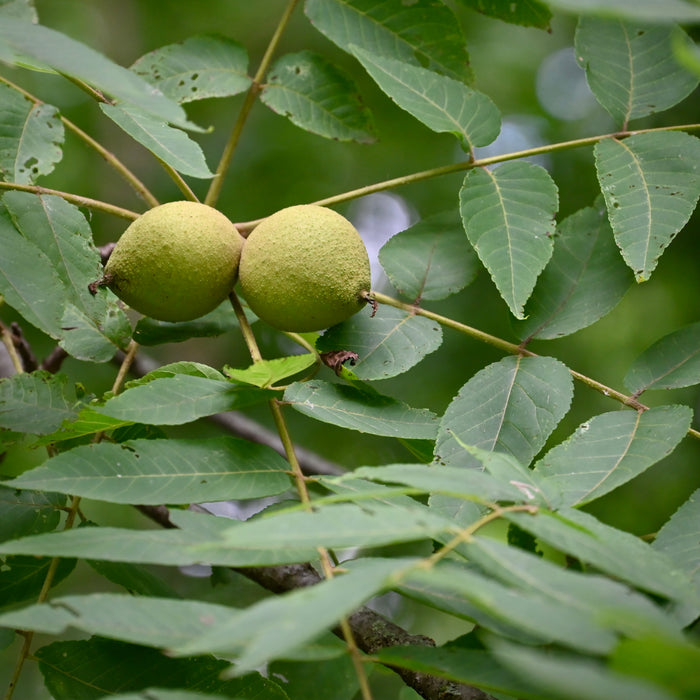
Black Walnut (Juglans nigra)
*Preorder Only*
Estimated Height at Pickup: 2-3’, 3 gal
An iconic lowland species! While locally common in some areas, it has been largely logged out in others and is an ideal species to include in habitat restoration. Nuts are edible and commercially viable, but difficult to shell by hand.
Pollination: 2+ individuals needed.
Light: Full Sun, Part Sun/Shade
Soil Moisture: Wet, Wet Mesic, Mesic
Soil Type: Loam, Silt Loam, Sandy Loam
Height: 75’-100’
Width: 75’-100’
Bloom Color: -
Bloom Time: May-Jun
Fruit: Edible nut meat in a thick shelled nut, in a fleshy husk.
Fall Color: Yellow
Root Type: Taproot
Notable Wildlife Interactions: Hosts many moths such as the walnut sphinx and luna, beetles, plant bugs, and smaller insects. Nuts are an important food for squirrels and chipmunks. Seedlings are occasionally browsed by rabbits.
Notes: Hulls can stain cloth permanently and hands for weeks, and can be soaked to make a brown dye. Saplings may produce nuts at 5 years, but take 10-15 years to produce a significant crop.
Shipping Unavailable







